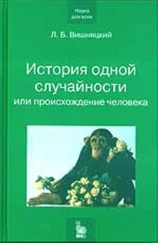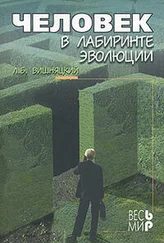Fernandez S., N. Fuentes, J. S. Carrion, P. Gonzalez- Samperiz, E. Montoya, G. Gil, G. Vega-Toscano, J. A. Riquelme. 2007. The Holocene and Upper Pleistocene pollen sequence of Carihuela Cave, southern Spain. Geobios 40, 75-90.
Finlayson C. 2004. Neanderthals and modern humans. Cambridge: Cambridge University Press.
Finlayson C. 2009. The humans who went extinct: why Neanderthals died out and we survived. New York: Oxford University Press.
Finlayson C., F. G. Pacheco, J. Rodriguez-Vidal, D. A. Fa, J. M. G. Lopez, A. S. Perez. 2006. Late survival of Neanderthals at the southernmost extreme of Europe. Nature 443, 850-853.
Froehle A. W. and S. E. Churchill. 2009. Energetic competition between Neandertals and anatomically modern humans. PaleoAnthropology, 96-116.
Gaudzinski S., E. Turner, A. P. Anzidei, E. Alvarez- Fernandez, J. Arroyo-Cabrales, J. Cinq-Mars,
T. Dobosi, A. Hannus, E. Johnson, S. C. Munzel, A. Scheer, P. Villa. 2005. The use of Proboscidean remains in every-day Palaeolithic life. Quaternary International 126-128, 179-194.
Gowlett J. A. J. 2006. The early settlement of northern Europe: Fire history in the context of climate change and the social brain. Comptes Rendus Palevol 5, 299-310.
Green R.E., J. Krause, S.E. Ptak, A.W. Briggs, M.T. Ronan, J.F. Simons, L. Du, M. Egholm, J.M. Rothberg, M. Paunovic, S. Paabo. 2006. Analysis of one million base pairs of Neanderthal DNA. Nature 444, 330336.
Green R. E., A.-S. Malaspinas, J. Krause, A. W. Briggs, P. L. F. Johnson, C. Uhler, M. Meyer, J. M. Good, T. Maricic, U. Stenzel, K. Prufer, M. Siebauer,
A. Burbano, M. Ronan, J. M. Rothberg,
M.Egholm, P. Rudan, D. Brajkovic, Z. Kucan,
Gusic, M. Wikstrom, L. Laakkonen, J. Kelso, M. Slatkin, S. Paabo. 2008. A complete Neandertal
Литература
mitochondrial genome sequence determined by high-throughput sequencing. Cell 134, 416-426.
Grimaud-Herve D. 1997. L'Evolution de l'encephale chez Homo erectus et Homo sapiens. Cahiers de Paleoanthropologie. Paris: CNRS.
Grunberg J.M. 2002. Middle Paleolithic birch-bark pitch. Antiquity 76, 15-16.
Guatelli-Steinberg D. 2009. Recent studies of dental development in Neandertals: Implications for Neandertal life histories. Evolutionary Anthropology 18, 9-20.
Hambucken A. 1997. La variabilite geographique des Neandertaliens. Anthropologica et Praehistorica 108, 109-120.
Harris J. R. 2006. Parental selection: A third selection process in the evolution of human hairlessness and skin color. Medical Hypotheses 66, 1053-1059.
Harvati K. 2007. Neanderthals and their contemporaries // In: Henke W. and I. Tattersall (eds.). Handbook of Paleoanthropology, vol. 3. Berlin, Heidelberg, New York: Springer, 1717-1748.
Hawks J. and G. Cochran. 2006. Dynamics of adaptive introgression from archaic to modern humans. PaleoAnthropology, 101-115.
Hebsgaard M. B., C. Wiuf, M. Thomas, P. Gilbert, H. Glenner,
Willerslev. 2007. Evaluating neanderthal genetics and phylogeny. Journal of Molecular Evolution 64: 50-60.
Henry and Piperno. 2008. Plants in Neanderthal diet: Plant microfossil evidence from the dental calculus of Shanidar III (Paper presented to the Paleoanthropology Society annual meeting, Vanqouver, 25-26 March 2008).
Higham T. 2006. Revised direct radiocarbon dating of the Vindija G1 Upper Paleolithic neandertals. Proceedings of the National Academy of Sciences of the USA 103, 553-557.
Hockett B. and J. A. Haws. 2005. Nutritional ecology and the human demography of Neandertal extinction. Quaternary International 137, 21-34.
Hofreiter M. and J. Stewart. 2009. Ecological change, range fluctuations and population dynamics during the Pleistocene. Current Biology 19, R584-R594.
Holloway R. L. 1985. The poor brain of Homo sapiens neanderthalensis: see what you please... In: Delson E. (ed.). Ancestors: The hard evidence. New York: Alan R. Liss, 319-324.
Holloway R. L., D. C. Broadfield, M. S. Yuan. 2004. Brain endocasts: The paleoneurological evidence. (The Human fossil record, vol. III). Hoboken, N.J.: Wiley & Sons.
Holloway R. L. 2009. Brain fossils: Endocasts. In: Squire L.R. (ed.). Encyclopedia of Neuroscience, vol. 2. Oxford: Academic Press, 353-361.
Holton N. E. and R. G. Franciscus. 2008. The paradox of a wide nasal aperture in cold adapted Neandertals: a casual assessment. Journal of Human Evolution 55, 942-951.
Hublin J.-J. 1998. Climatic changes, paleogeography and the evolution of Neanderthals. In: Akazawa T., K. Aoki, O. Bar-Yosef (eds.). Neanderthals and modern humans in Western Asia. New York: Plenum Press, 295-310.
Hublin J.-J. 2006. Neandertal as another humankind: where are we now? Terra Nostra (2): 55-59.
Hublin J.-J. 2009. The origin of Neandertals. Proceedings of the National Academy of Sciences of the USA 106, 16022-16027.
Hublin J.J. and S.E. Bailey. 2006. Revisiting the last Neandetals. In: Conard N.J. (ed.). When Neanderthals and Modern Humans Met. Tubingen: Kerns Verlag, 105-128.
Huxley T. H. 1864. Further remarks upon the human remains from the Neanderthal. Natural History Review 1, 429-446.
Kittler R. et al. 2003. Molecular evolution of Pediculus humanus and the origin of clothing. Current Biology 13, 1414-1417.
Klein R. G. 1989. The Human Career. Human Biological and Cultural Origins. Chicago and London: University of Chicago Press. [2nd ed. 1999; 3rd ed. 2009].
Koller J. and D. Mania. 2001. High-tech in the Middle Paleolithic:Neanderthal-manufactured pitch
identified. European Journal of Archaeology 4, 385-397.
Krause J., C. Lalueza-Fox, L. Orlando, W. Enard, R. Green et al. 2007a. The derived FOXP2 variant of modern humans was shared with Neandertals. Current Biology 17, 1-5.
Lalueza-Fox C. 2006. Mitochondrial DNA of an Iberian Neandertal suggests a population affinity with other European Neandertals. Current Biology 16, 629-630. Lalueza-Fox C., H. Rompler, D. Caramelli, C. Staubert,
Catalano, D. Hughes, N. Rohland, E. Pilli,
Longo, S. Condemi, M. de la Rasilla, J. Fortea, A. Rosas, M. Stoneking, T. Schoneberg,
Bertranpetit, M. Hofreiter. 2007. A melanocortin 1 receptor allele suggests varying pigmentation among Neanderthals. Science 318, 1453-1455.
Lee S.-H. and M. Wolpoff. 2003. The pattern of evolution in Pleistocene human brain size. Paleobiology 29, 186-196.
Lewin R. and R. A. Foley. 2004. Principles ofhuman evolution.
2nd ed. Malden/Oxford/Carlton: Blackwell. Lieberman P. and E. S. Crelin. 1971. On the speech of Neandertal man. Linguistic Inquiry 2, 203-222.
Liu H., F. Prugnolle, A. Manica, F. Balloux. 2006. A geographically explicit genetic model of worldwide human-settlement history. American Journal of Human Genetics 79, 230-237.
Macaulay V., C. Hill, A. Achilli, C. Rengo, D. Clarke,
W.Meehan, J. Blackburn, O. Semino, R. Scozzari,
Cruciani, A. Taha, N.K. Shaari, J.M. Raja, P. Ismail, Z. Zainuddin, W. Goodwin, D. Bulbeck,
-J. Bandelt, S. Oppenheimer, A. Torroni,
M.Richards. 2005. Single, rapid coastal settlement of Asia revealed by analysis of complete mitochondrial genomes. Science 308, 1034-1036.
MacLarnon A. M. and G. P. Hewitt. 1999. The evolution of human speach: the role of enhanced breathing control. American Journal of Physical Anthropology 109, 341-363.
McDougall I., F. H. Brown, J. G. Fleagle. 2008. Sapropels and the age of hominins Omo I and II, Kibish, Ethiopia. Journal of Human Evolution 55, 409-420.
Martinez I., M. Rosa, J.-L. Arsuaga et al. 2004. Auditory capacities in Middle Pleistocene humans from the Sierra de Atapuerca in Spain. Proceedings of the National Academy of Sciences of the USA 101, 9976-9981.
Martinez I., J. L. Arsuaga, R. Quam, J. M. Carretero, A. Gracia, L. Rodriguez. 2008. Human hyoid bones from the Middle Pleistocene site of Sima de los Huesos (Sierra de Atapuerca, Spain). Journal of Human Evolution 54, 118-124.
Читать дальше







